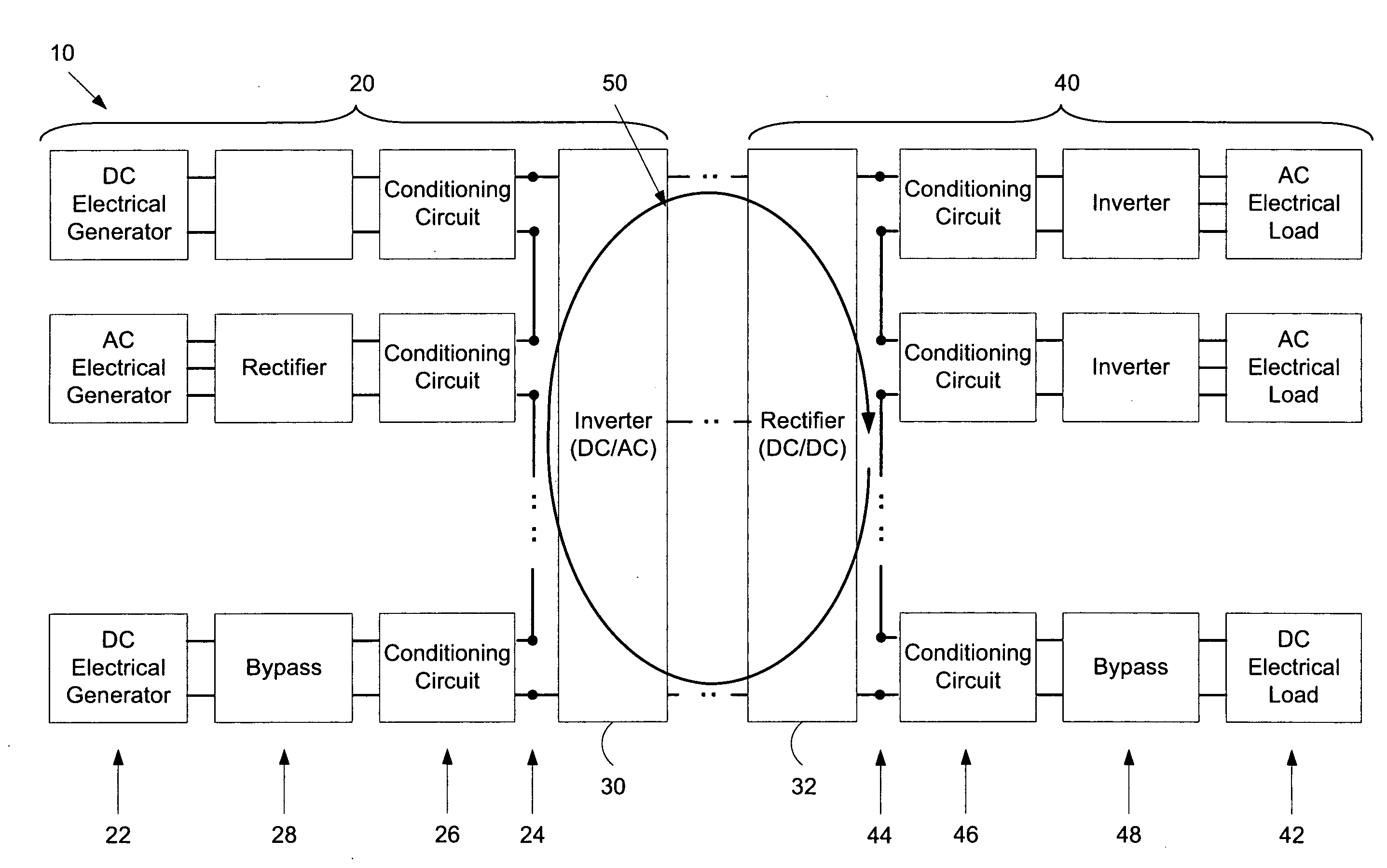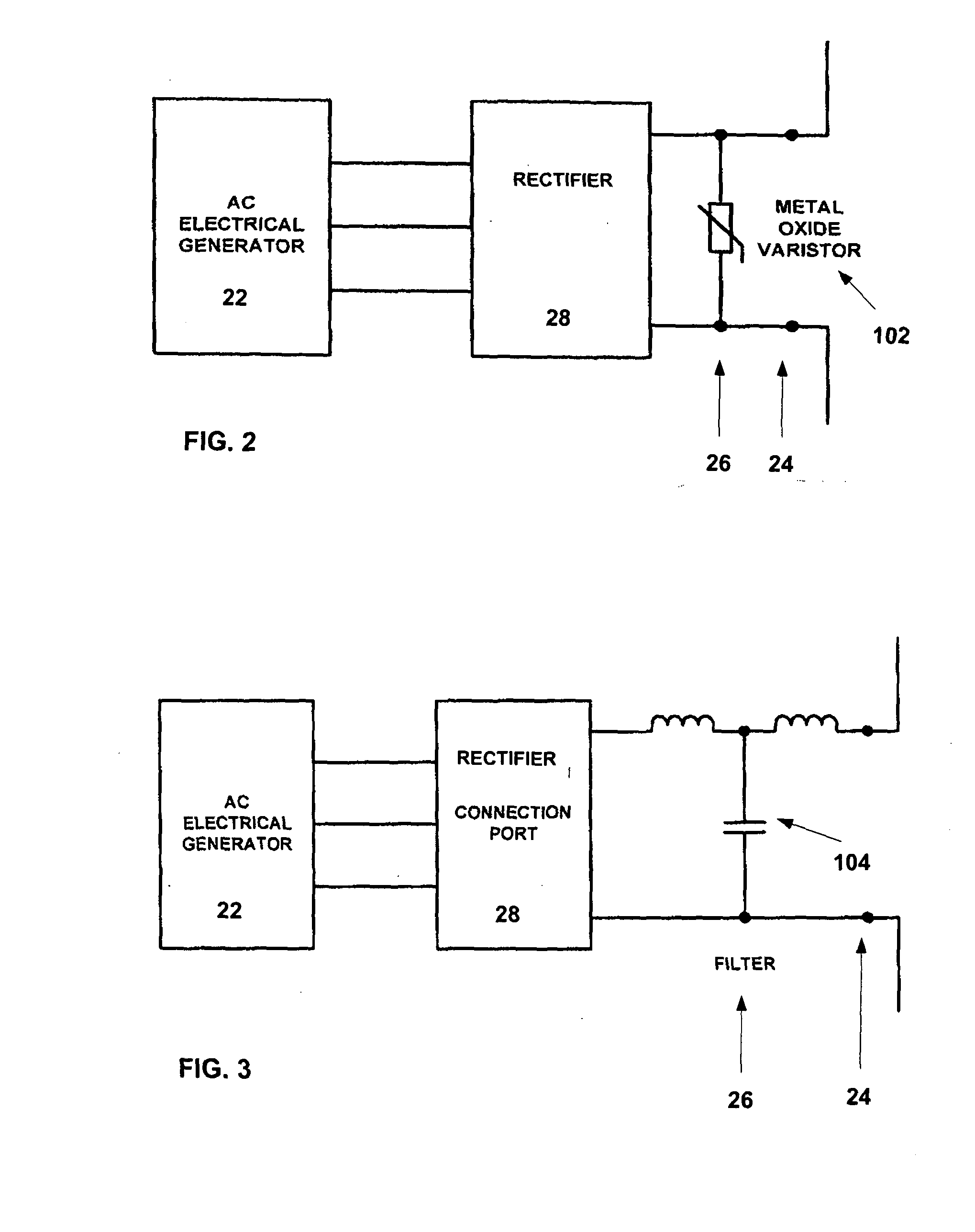Electrical energy and distribution system
a technology of electric energy and distribution system, applied in the direction of electric power transfer ac network, single network parallel feeding arrangement, constant-current supply dc circuit, etc., can solve the problems of only economically viable and relatively expensive schemes, and achieve the effect of increasing system reliability and availability, enabling easy maintenance and troubleshooting
- Summary
- Abstract
- Description
- Claims
- Application Information
AI Technical Summary
Benefits of technology
Problems solved by technology
Method used
Image
Examples
Embodiment Construction
[0035]Referring first to FIG. 1, the electrical system 10 comprises a supply side 20 where, generally, multiple electrical energy generators 22 are connected via connection ports 24, involving conditioning circuits 26 and possibly additional conditioning circuitry 28, into a single DC electrical energy source. This energy source is supplied to a common inverter system 30 to convert it to AC for transmission on over a power grid. A rectifier 32 takes the AC power from the grid and delivers it to AC and DC loads. On the delivery side 40 energy is delivered to multiple loads 42 via connections ports 44 involving conditioning circuits 46 and other conditioning circuitry 48.
[0036]In this way the electrical energy generators 22 are connected in a series DC loop 50. Electrical circuit theory dictates that the current in each part of the series DC loop 50 is the same but the voltage developed by each generator is added together. The power delivered is therefore the product of the total volt...
PUM
 Login to View More
Login to View More Abstract
Description
Claims
Application Information
 Login to View More
Login to View More - R&D
- Intellectual Property
- Life Sciences
- Materials
- Tech Scout
- Unparalleled Data Quality
- Higher Quality Content
- 60% Fewer Hallucinations
Browse by: Latest US Patents, China's latest patents, Technical Efficacy Thesaurus, Application Domain, Technology Topic, Popular Technical Reports.
© 2025 PatSnap. All rights reserved.Legal|Privacy policy|Modern Slavery Act Transparency Statement|Sitemap|About US| Contact US: help@patsnap.com



